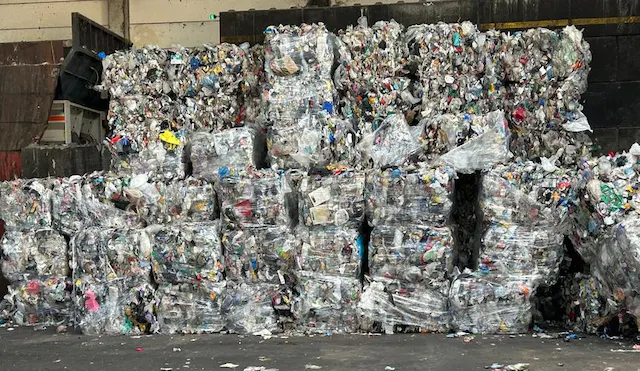Waste is not just waste

Packaging waste is not just waste when it comes to recycling resources! It is a complex reality to step into when we must utilize our household-collected packaging waste to a greater and better extent than we do today!' VANA has therefore visited the German plant to learn more about the practice of sorting and treating our household waste.
Every year, the sorting and recycling facility Hündgen Entsorgungs GmbH & Co. KG. KG accepts approximately 25,000 tonnes of Danish household waste for sorting, treatment, and recycling from, among others, the City of Copenhagen.
VANA has therefore visited the German plant to learn more about the practice of sorting and treating our household waste.
The Danish fraction that goes to the Hündgen plant is plastics, food, and drink cartons fraction. This makes it significantly different from German packaging waste. In addition, there is a significantly greater occurrence of foils in the Danish fractions, and the waste is balletised (compressed into 1-ton bales), whereas the German packaging waste is collected and delivered in bulk.

“So, they do not achieve the best use of the resources without effort! Because it is about adapting sorting processes and lines to the waste that comes in through the door,"
Consultant for Circular Economy, VANA
What does the best use of resources mean?
It can be considered from several perspectives:
Based on the definitions of what a circular economy for packaging is in the EU, it will be considered from a quality perspective.
Put plainly, that means that the best quality equals the recovered secondary raw material and is recovered 1:1.
So, in other words, the originally produced packaging can be recycled into a secondary raw material that has the same properties as the original material.
Can this not be achieved, it is called 'down-cycling' - or in other contexts spiral recycling.
Read more about these principles here.
Another approach is the value chain approach, where the secondary material is produced in the quality that a given buyer demands and needs for a specific product. Often in such cases, these are joint venture collaborations in which the quality of the secondary raw material is jointly developed. In addition, it makes it possible to ensure that there is a balance between supply and demand.
Exactly that is one of the Hündgen plant's approaches to the development and innovation of their business. According to themselves, they are experts in sorting household waste, and they also strive to become experts in recycling.
Openness and collaboration are necessary
“The openness and insight that the company's CEO, Christian Hündgen, and Head of Operation of the plant, Frank Arleth, have given us is valuable knowledge for VANA, explains Consultant for Circular Economy, Rikke Halkjær Kristensen,” and continues:
“This knowledge will benefit our members when the producer responsibility for packaging comes into force. This openness is an important parameter to be able to lift the producer responsibility for packaging in the best possible way.”
There is no getting around the fact that we need to know what happens to packaging waste to be able to help our members design the packaging in a way so that they can be recycled best and cheapest.
The sorting process at the Hündgen plant
- The waste arrives from Denmark in balletised form and from Germany in bulk.
- Large waste is separated manually before it is loaded into the mechanical sorting process.
- When the waste is sent through the sorting plant, it is sorted using various technologies according to the types of material, PET, PP, PE, PO, cardboard, aluminium, food, and beverage cartons.
- The different secondary raw materials extracted are obtained in different grades, which therefore can be used to be incorporated into different types of new products.
- Throughout the process, there are lots of materials that cannot be used for 'new' raw material in terms of quality. This residue is used for secondary fuels.

